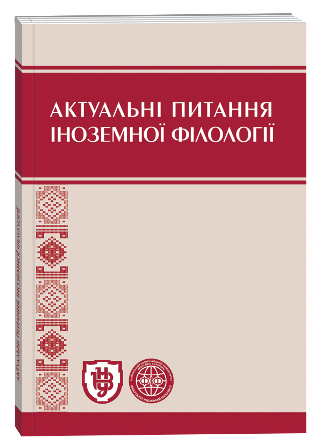INCLUSIVE EDUCATION FOR PUPILS WITH AUTISTIC SPECTRUM DISORDERS
DOI:
https://doi.org/10.32782/2410-0927-2020-13-21Keywords:
autism, special educational needs, psychological adaptation, ways of teaching, inclusionAbstract
In this article attention is paid to psychological adaptation of children with autistic spectrum disorder in the learning process. The appropriate strategies of teaching English as a foreign language to students with ASD that will supply their psychological adaptation in mainstream secondary schoolsare highlighted.The concept of inclusion is revealed and the basic principles of inclusive education are emphasized. Methods of learning words, sounds and letters in foreign language lessons by children with autism are considered. A person with autism generally has difficulty in language learning, obtaining communication, social, and cognitive skills. Due to these challenges, children with autism learn better from visual aids, imitation and structured surroundings that fit their sense perception and routines. They have to deal with the consequences of negative attitude towards people with disabilities in general. Nevertheless, some families, despite having children with severe ASDs, have still managed successful psychological adaptation.It is recognized that children in such conditions better adapt to the environment, develop social skills, and feel more independent and socialized. Parents and the professionals agree that every child with an autism spectrum disorder is unique and it takes lots of hard work to help a child with autism get the most out of the classroom experience. It also takes, a good dose of structure and understanding that each child has different needsas well as styles of learning. Interaction with other children will help to obtain out of the classroom experience through games, which allow some children with autism to accept a social interaction. A structured environment can make the child feel secure and more open to learning. The main forms of interactive work are educational interaction of students in pairs and micro groups. Groups study learning material and develop interpersonal skills.The visual aids combined with demonstrations of different activities can help a child improve their language skills. The effectiveness of these exercises depends on the extent to which the following conditions are met: systematic conduct; their distribution in order of increasing complexity; alternation and diversity of exercises.
References
Colihan, Kelley. “Autism in the classroom”. URL: http://www.webmd.com/brain/autism/features/autism-in-the-classroom
Meynert, Mariam John. 2012. “Inclusive Education and Perceptions of Learning Facilitators of Children with Special Needs in a school in Sweden”. International Journal of Special Education.
Mykola Yarmachenko Institute of Special Pedagogy and Psychology of the National Academy of Pedagogical Sciences of Ukraine. URL: http://ispukr.org.ua/?page_id=331#.X71d4WgzY2w
O’Callaghan, Finbar. 2002. “Autism – what is it and where does it come from?” An International Journal of Medicine 263–265.
Teaching Methods – Children’s with Autism. URL: http://vikaspedia.in/education/ education-best-practices/teaching-methods-children-with-autism
The Standard Rules for the Equalization of Opportunities for Persons with Disabilities of December 20, 1993 were approved on December 20, 1993 at the 48th session of the UN General URL//http//zakon.rada.gov.ua.
Warber, Adrienne. Teaching Methods for Autistic Children. URL: https://autism.lovetoknow.com/ Teaching_Methods_for_Autistic_Children







